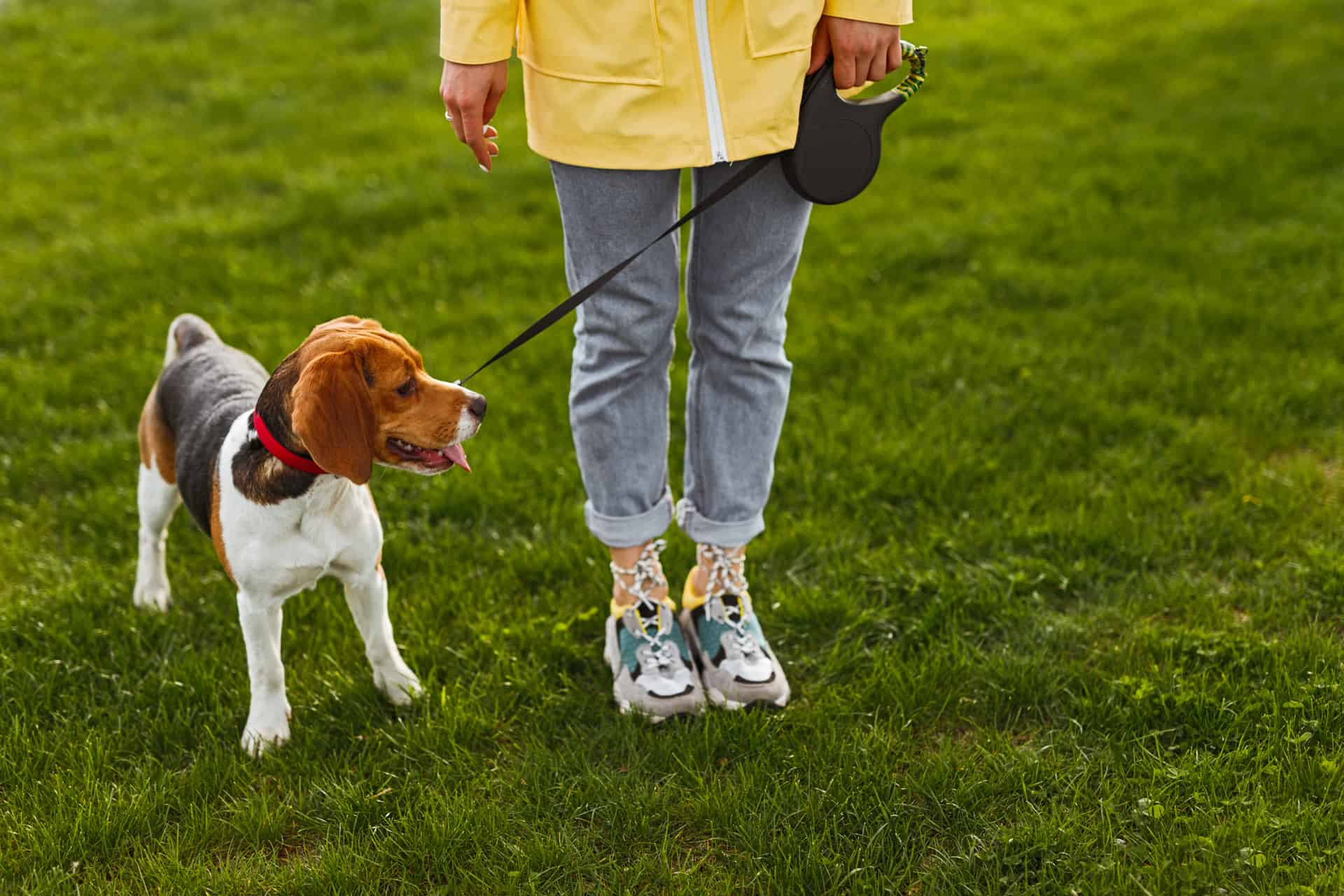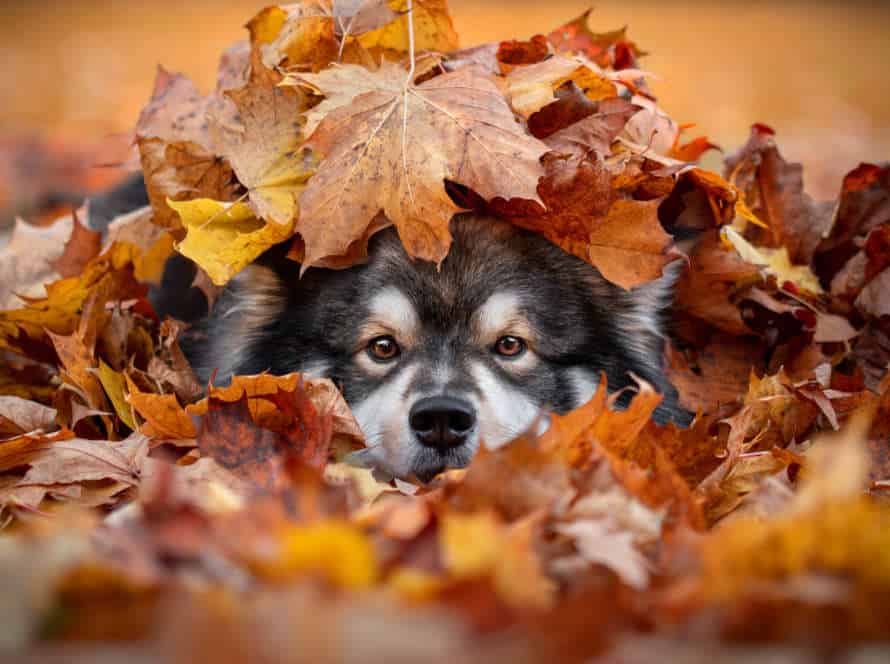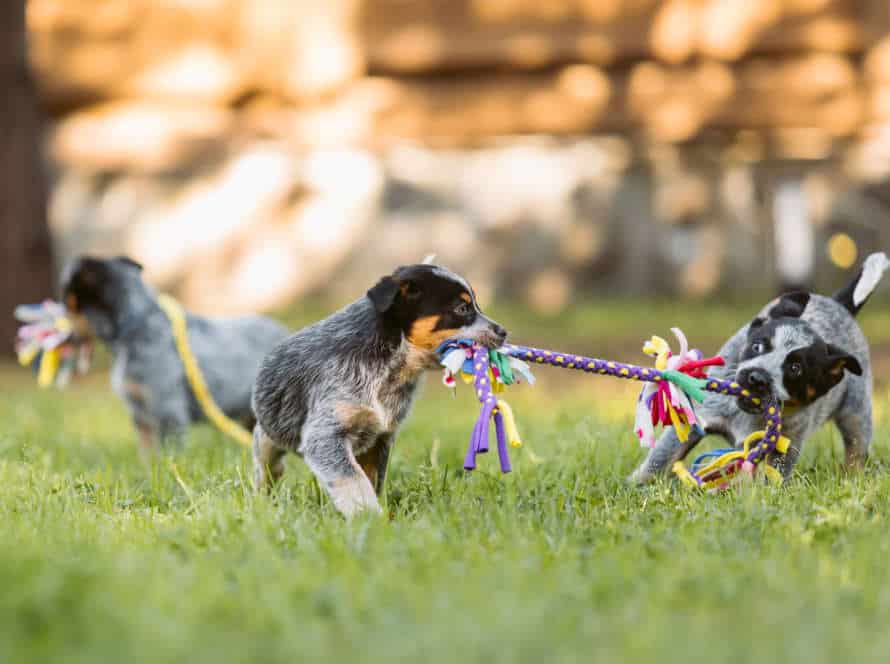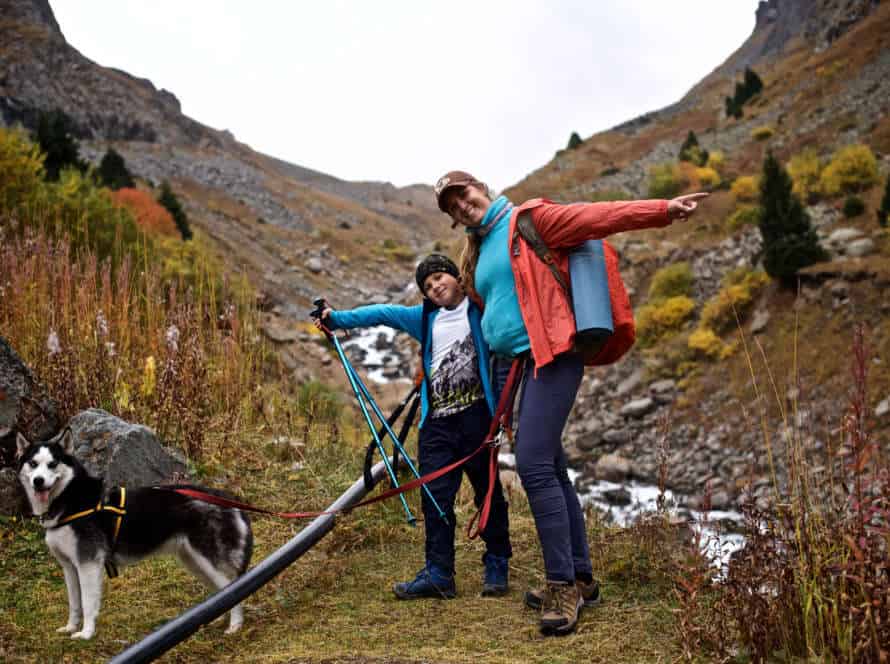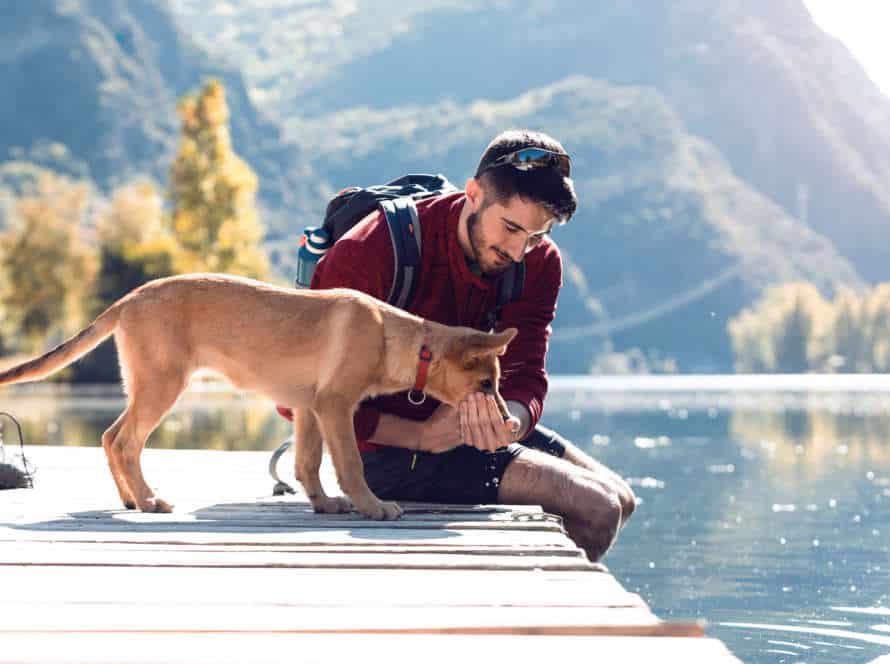Understanding Resilience in Dogs
Dogs possess the skill to learn and thrive, even in challenging times. Resilience is key! It helps your pup deal with tough or unknown situations calmly and approach novel experiences with assurance. Knowing resilience in dogs is vital to educator them to be smart and confident.
Let’s investigate the science of resilience and how to help your pooch become more resilient.
Definition of resilience
Resilience refers to a pup’s ability to bounce back in tricky or intense situations. To boost a pooch’s resilience, they can be exposed to novel experiences and tasks which help them create strategies to cope. Here are some tips to aid in building your pup’s resilience:
- Introduce your pup to different kinds of people, animals, and places in a calm and controlled manner.
- Reward any good behaviour, for example curiosity, assurance, and a desire to explore.
- Provide your pup with mental and physical stimulation through activities such as playing, training, and exercise.
- Make a secure and relaxed home environment with rules and routines that stay the same.
- Focus on what your pup is good at and attempt to enhance any areas of weakness.
Remember: Building resilience is a gradual process and requires a lot of patience, constancy, and reinforcement that is positive. With effort and time, your pup will become more resilient and better prepared to tackle any trouble that comes their way.
The importance of resilience building in dogs
Building resilience in dogs is essential for their physical and mental health. This is especially true when they face new experiences. Resilience is the capacity to adjust and recover from stressful experiences or changes in their environment, such as a new family member.
Here are some tips to build resilience in your pup:
- Positive reinforcement: Show approval of good behavior and reward them with treats or praise. This will condition them to keep doing it.
- Let them experience different situations. Examples include unfamiliar people, animals, and environments. This will help them become socialized and more relaxed in novel experiences.
- Give them small challenges. Such as completing an obstacle course, fetching a ball, or learning a new trick.
With the right training and environment, you can help your dog build resilience and face the unknown with confidence.
Factors that affect a dog’s resilience
Resilience is important for a pup’s wellness and their capacity to adjust to new encounters. Genes, environment, socialization, and training all have an effect on a doggy’s resilience.
Genetics:
The breed and genes of a pup can influence their level of resilience in various ways. Particular breeds are more resilient due to their breeding background.
Environment:
The living conditions and surroundings of a pup can have an effect on their resilience. A comforting and helpful environment can increase resilience while a disorderly and tense one can decrease it.
Socialization:
Early socialization is essential for a dog’s resilience. Making contact with other dogs and humans from an early age can help a pup build social abilities and feel more at ease in fresh circumstances.
Training:
Positive reinforcement techniques can strengthen a pup’s resilience by strengthening their assurance and teaching them how to manage tough situations. Exercise and mental stimulation are also necessary for a pup’s resilience.
Considering and attending to these elements can help enhance your pup’s resilience and general life quality.
Ways to Build Resilience in Dogs
Dogs with great experiences with peoples, other doggies, and varied scenarios will better cope when faced with fresh experiences. Resilience in dogs is important for their mental and physical health, so boosting it is essential. Let’s explore the best ways to construct resilience in your pup!
Socialization
Socialization is essential for building resilience in dogs. It helps them become well-adjusted, confident and less anxious or aggressive when in new situations. Here are some tips to socialize your dog:
- Take your pup for walks in various locations like parks, beaches and busy roads.
- Introduce your dog to different people i.e children, seniors and pet owners.
- Arrange playdates with other dogs. This will help your pet learn how to interact with other animals.
- Expose your pup to different sounds, smells and textures. E.g traffic noises, fireworks, or unfamiliar surfaces.
- Enroll your pup in socialization classes or work with a professional trainer.
Remember to introduce new experiences gradually and reward positive behaviour with treats, praise and affection.
Obedience Training
Obedience training is a great way to make your dog more resilient. It can build good behavior and strengthen the connection between you and your pup. Here are some of its benefits:
- Confidence: Training offers a structured and familiar environment that helps your dog gain confidence and self-belief.
- Socialization: It teaches them how to interact with other dogs and people, boosting their socialization skills and helping them adjust to new surroundings.
- Calming: It provides calming techniques, reducing their anxiety and making them more resilient.
- Mental Stimulation: It’s a great exercise to keep them mentally active, avoiding boredom and keeping them in good mental health.
It helps dogs listen and respond to commands, leading to a happier and stronger pup.
Exposure to novel experiences
Strengthen your pup’s resilience by exposing them to unfamiliar experiences! It’ll help them learn new abilities, adjust to changes, and become more confident. Here are some ideas:
- Go for car trips to different spots.
- Introduce your dog to other canines and people.
- Teach ’em new tricks and buy new playthings.
- Take ’em for walks in unique areas or on diverse terrains.
- Let ’em be exposed to varied sights, sounds, and smells in a controlled setting.
Always take it slow and be patient. Gradually increase the exposure to the new stuff to avoid overwhelming them. Pro Tip: It’ll take a while and effort, but the results will totally be worth it!
Development of routines and predictability
Developing routines and predictability is key to help dogs become resilient and adjust to new experiences.
Creating a consistent routine will make them feel safe and reduce their fear of the unknown. Here are some tips:
- Feed them at the same time and place every day. This will let them know when food is coming, and reduce stress.
- Schedule daily walks and playtime. This makes the routine more familiar and helps them feel secure.
- Set boundaries. Show them where they are allowed to be in the house and when it’s ok to play.
Pro Tip: Consistency is essential. Keeping to the same schedule every day helps your pup remain resilient and flexible.
The Role of Play in Resilience Building
Playtime is key in helping your pup build resilience. Just like us humans, it’s vital for dogs to have a fun and positive environment to learn and cope. In this article, we’ll discuss how playtime can help your dog become more resilient.
Definition of play
Play is any activity done for fun. It is important for developing children and animals, like dogs. When it comes to resilience in dogs, play is key. Playtime can stimulate their senses, improve fitness, and build social connections. Bonding through playtime can reduce stress and anxiety. New experiences, such as sights, sounds, and smells, can help them become more adaptable, confident, and enrich their lives.
As a dog owner, it is important to know their play style and preferences. Observe and learn so you can understand their play habits and help build resilience. Pro tip: 15 minutes of play a day can have a positive impact on their wellbeing, promote resilience, and strengthen your bond.
Types of play
Six types of play are vital for growing resilience in both children and dogs.
- Social play involves two or more people and encourages socialization and communication.
- Object play includes toys and objects, building physical activity and problem-solving skills.
- Imaginative play is make-believe, aiding creativity and emotional understanding.
- Physical play involves active movements, helping with physical development and coordination.
- Solitary play is about playing alone, developing self-sufficiency and creativity.
- Creative play means exploring materials and arts and crafts, encouraging imagination and self-expression.
Adding these kinds of play to a child or dog’s daily routine will help them grow resilience and life skills.
Importance of play in resilience building
Playing is essential to building resilience in both humans and dogs. It boosts physical and mental health and helps develop social and emotional skills. Here’s why play is key for resilience:
- Playing stimulates the brain, aiding in adapting to new situations.
- It reduces stress and anxiety, creating a feeling of safety.
- Play creates social links, developing emotional intelligence and forming positive connections to manage life’s challenges.
In conclusion, play is an essential factor in building resilience – helping humans and dogs to face difficulties with more ease and success.
Ways to incorporate play into a dog’s routine
Including play in your dog’s daily activities is a must to build their resilience and help them adapt to new situations. Here are some ideas:
- Interactive Toys: Give your pup toys that are both mentally and physically challenging, like treat-filled puzzles and ball launchers.
- Tug of War: Play tug of war with your dog using a rope toy. Train them to release the toy on command to avoid aggression.
- Hide and Seek: Hide your dog’s favorite toy or treat around the house or yard. This will help them use their problem-solving skills and stay stimulated.
- Fetch: Throw a ball for your pup to fetch. It is a great way to build physical strength and bond with your dog.
- Swimming: If you have access to a pool, let your dog try swimming. It is a great low-impact exercise and will help protect their joints.
Healthy Lifestyle Habits to Promote Resilience
For a healthy and fun life, build resilience in your pooch! It’s not just about walks and play. Create an environment that helps them to grow and explore. Try these healthy lifestyle habits to help them become stronger and to sharpen their physical, mental, and social abilities.
Proper nutrition
Nutrition is key for wellness and strength against sicknesses. Have a balanced diet with carbs, proteins, good fats, fiber, minerals, and vitamins. Eat a mix of fruits, veggies, nuts, grains, lean meats, and low-fat dairy products. Select foods that are nutrient-rich and dodge processed and high-sugar items. Drink enough water, restrict alcohol, and cut back on caffeine. Besides, regular physical activity can assist healthy eating habits and benefit your overall health and resilience. Pro Tip: A variety of nutrient-dense foods help ensure good health and build resilience for the future.
Regular exercise
Exercise is a must for both humans and doggos! It builds resilience, helping them cope with stressful times. It’s great for physical and mental health.
Physical health: Exercise keeps doggos fit, strong and healthy.
Mental health: Exercise releases endorphins and boosts serotonin levels, reducing tension and anxiety.
Socialization: Exercise helps doggos to socialize better with other doggos and humans.
30 mins of activity daily is ideal – brisk walks, runs, hikes and playtime in safe, open areas.
Pro tip: Make exercise fun and consistent by mixing up activities, using toys and rewarding good behaviour.
Adequate rest and relaxation
Rest and relaxation are essential for a healthy, resilient lifestyle – both for humans and dogs. Here are some tips to promote rest and relaxation in your pup:
- Provide a comfy, quiet spot for them to sleep.
- Create a routine; same feeding and exercise times each day.
- Reduce overstimulation before bed – no screens or loud noises.
- Try relaxation techniques, like massages, aromatherapy, or calming music.
- And finally, be aware of your own stress levels – it can affect your pup’s well-being. Model healthy habits, and your pup may follow suit.
Signs of Resilience in Dogs
Dog owners want their pets to have a great life. This includes having resilience and being able to manage new things. Signs of resilience in a dog are a great attitude towards new places, socializing and problem-solving.
Let us look at the signs of a resilient dog and how owners can help build resilience in their furry companions.
Positive attitude
Having a positive attitude is key to developing resilience in dogs. Here are signs of resilience to watch for:
- Adaptability: Dogs with resilience can adjust to new situations and surroundings without worry or fear.
- Curiosity: Resilient dogs usually show curiosity and a readiness to try out new things with excitement.
- Socialization: Resilient dogs often have friendly connections with other dogs and people.
- Emotional Regulation: Resilient dogs can remain calm in tense or unstable times.
Pro Tip: As an owner of a resilient pup, you can boost their good attitude by giving them social occasions, praising them and giving rewards, and keeping them active with play and exercise.
Flexibility
Flexibility is crucial for a dog’s resilience. Here are some tips to help build it:
- Introduce new things gradually, so your pup can adjust.
- Provide different toys and activities.
- Encourage your pup to try new foods and explore different places. Make sure they are safe.
- Keep training sessions short and fun.
It takes time and patience to build resilience. With effort and positive reinforcement, your pup can learn to face challenges. And you will both have a great life together!
Pro Tip: If your pup is anxious or fearful, consult a professional dog trainer or vet.
Adaptability
Pups are amazingly adaptable beings! Adaptability is a key part of resilience in dogs. Here are some clues to watch for that show your pup is doing alright:
- Your pooch can cope with changes in their routine, without getting overly stressed.
- They can handle new encounters and places with no difficulty.
- They learn new stuff quickly with training.
- They are sociable and like being around people and other dogs.
- They can be alone for brief spells without getting distressed or destroying things.
To build resilience in your pup, introduce them to new experiences gradually. Start in a less stressful scene and steadily increase the level of stimulation. This method will aid your pup to manage and get used to new experiences, and develop more adaptability over time.
Quick recovery from stress
Resilience in dogs is shown in their speedy recovery from stress and adapting to new things. If your pup shows these signs, you can aid them in developing and strengthening their ability to manage stress and change.
A few markers of resilience in dogs:
- Fast return to normal after a stressful incident or situation.
- Positive attitude to change and novel experiences.
- Enthusiasm to explore the environment.
- Healthy eating, peaceful sleep, and normal toileting habits.
To make your dog more resilient, give them exposure to different experiences in a pleasant and managed atmosphere. Introduce them to new people, animals, sights, sounds, and fragrances. Give them lots of socialization and training possibilities to make them feel secure and self-assured in various scenarios.
Pro Tip: Building a dog’s resilience takes commitment, patience, and constancy. Recognize and reward good behavior, and seek a professional trainer’s help if needed.
Final Thoughts and Recommendations
Pondering this topic is done! Let’s finish with a few last words. Here are some tips for making your doggo more resilient. Firstly, show your pup new experiences. Secondly, watch for any risks. Lastly, help your furry friend through these novel activities. And that’s it!
Importance of building resilience in dogs
Building resilience in dogs is key for their emotional & mental wellbeing, and also for adapting to new things. Here’s why it’s important:
- Cope with stress & anxiety: Resilient dogs handle stressful situations better. Result = less fear & worry.
- Adapt to change: Building resilience makes dogs feel more comfy & confident when facing the unknown.
- Strengthen bond with their owner: Resilient dogs trust & rely on their owners more. Result = a stronger bond.
Here are some tips for building resilience in your pooch:
- Provide positive experiences: Introduce your dog to new people, places & events in a slow, positive way.
- Keep to a routine: Structured routines help dogs feel secure & reduce worry.
- Exercise & play: Physical activity is awesome for reducing stress & maintaining a healthy emotional balance in dogs.
Pro tip: Building resilience takes time & patience. With consistent effort & positive reinforcement, your dog can become more confident & adaptive to new experiences.
Tips for promoting resilience in dogs
Having resilience is vital for a pup to manage novel encounters and unforeseen circumstances. Here are some tips to cultivate resilience in your four-legged pal:
- Early socialization for your pup to folk, places, and other animals.
- Gradually accustom them to tense situations to grow their assurance and capacity to cope.
- Reinforce desirable conduct with positive reinforcement to construct faithfulness.
- Proffer them plenty of activity, mental stimulation, and love to improve their wellbeing.
- Abstain from overprotecting them since it can lead to reliance and obstruct their aptitude to cope with stress.
By following these instructions, you can assist your pup to become more resilient and better able to face life’s highs and lows.
Seeking professional help if the dog experiences excessive stress or trauma
Dogs feel stress and trauma, just like people. It’s crucial to get help from professionals if your dog is going through too much stress or trauma. Search for a certified dog behaviorist or vet behaviorist who has experience with dogs that have been through trauma. They can help you find out what triggers the stress and make a plan to help your pup cope.
Signs that your dog may need help: Aggression, too much fear, destroying things, or not being active.
Remember, it takes time and patience to make your pup resilient again. With proper care and guidance, your dog can overcome trauma and live a content and healthy life.
Frequently Asked Questions
Q: How can new experiences help build resilience in my dog?
A: New experiences help your dog learn to adapt to new situations and problem-solve, which can increase their confidence and emotional resilience.
Q: What types of new experiences should I expose my dog to?
A: It’s important to expose your dog to a variety of experiences, such as novel environments, sounds, textures, and people. These can be introduced gradually and with positive reinforcement.
Q: How can I ensure my dog has a positive experience with new situations?
A: It’s important to introduce new experiences gradually, with positive reinforcement and plenty of breaks. It’s also important to monitor your dog’s body language and adjust accordingly.
Q: Can exposing my dog to new experiences be stressful for them?
A: It’s possible that exposing your dog to new experiences can be stressful, but with proper introduction and positive reinforcement, it can ultimately build their resilience and confidence.
Q: Can older dogs still benefit from new experiences?
A: Yes, older dogs can still benefit from new experiences. It’s important to introduce new experiences gradually and tailor them to your dog’s abilities and limitations.
Q: Can building resilience in my dog help with behavior issues?
A: Yes, building resilience can help with behavior issues, as increased confidence and problem-solving skills can lead to a reduction in fear and anxiety-based behaviors.

